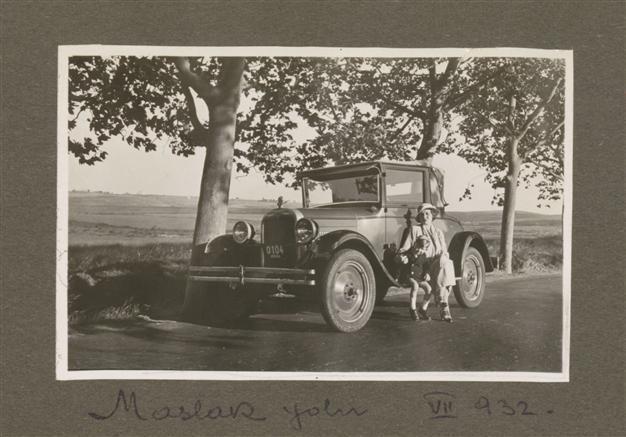Ottoman and new republic era reveal with a family archive
ISTANBUL – Hürriyet Daily News

The archive shows the audiences how people lived, felt and also thought during the turbulent times of a new republic.
It has always been known that the act of archiving was not very developed both in the times of the Ottoman Empire and also Turkey. The aim of Salt Open Archive is to change this point of view while opening the archives of old and closed history. Another aim is to make the history archive open to anyone and reveal the act of archiving and conserving as a habit.Opened on Jan. 21, Salt Open Archive is hosting the history and story of an Ottoman family.
The Open Archive exhibition, titled “Dismantling the Archive: Representation, Identity, Memory in an Ottoman Family” follows the idea that the story of a life is like an archive. The exhibition is a mass of constructed and filtered events that are unconnected to one another, random, irrational. The exhibition consists of archive documents, photographs, books, folders and notebooks that were donated by Hatice Gonnet Bağana to SALT Research.
The documents focus on the years 1900-1940 of the Said Bey Archive, encompassing three generations from the late Ottoman period up through the early years of the Republic of Turkey. Mehmed Said Bey, who lived between 1865 and 1928, was a graduate of the Imperial School, today’s Galatasaray High School, and is the main character of this exhibition, which is also edited as a story of a life. It is known that Said Bey went on to teach there in addition to working as an interpreter at the Ottoman palace.
According to the team that created the exhibition, in the words of the French historians François Georgeon and Paul Dumont, he was a veritable “caricature of a bourgeois resident of Istanbul.” There was a piano in his home; every day, in his diary, he noted down what he had done; he enjoyed going to the cinema; he arranged for his children to be taught French by a young mademoiselle; and in the 1920s, he and his family moved to an apartment in the Şişli district.
 How people lived, felt and thought
How people lived, felt and thought The archive shows the audiences how people lived, felt and also thought during the turbulent times of a new republic, while the Ottoman Empire came to an end. The exhibition attempts to understand how a family, as it passed through a complicated process of transition, expressed and represented itself in writing, photography, music, narratives, and material culture.
The archive explores how an Ottoman family accepted or did not accept the new republic and how they perceived it. It goes on to explore how family memories became intertwined with the national narrative of the young republic still in the process of formation, and how the family constructed their own identities by delineating social and class boundaries.
The identity and language aspects are among the important part of the archive. The notes taken in those times were in Armenian, French and also in Ottoman. It is possible to see notebooks that include notes on a wedding list and poems written in Istanbul. However, the writings are not the only documents that help the audiences.
To make the Open Archive a real exhibition, the team used sound and odor. The exhibition area smells like lavender oil, which refers to an old odor of the house. The sound of old Turkish classical music is heard, while the area has been divided with the white and light curtains just like a house. A small illustrated video is reflected on the curtain, which were made by Sait Mingü, and the video created by Boran Güney.
Project based on a master thesis
The exhibition aims to inspect the possibilities and limitations of biographical and historiographical investigation and to make these disciplines as transparent as possible. It emphasizes the word “dismantling,” the antithesis of the integrity, order, isolation, and privacy typically attributed to archives and to biography. The project was conceptualized by Ece Zerman, based on her master thesis, and later developed as part of SALT’s “Open Archive” series. The exhibition design is by Future Anecdotes Istanbul.
The exhibition is open until March 23.
















